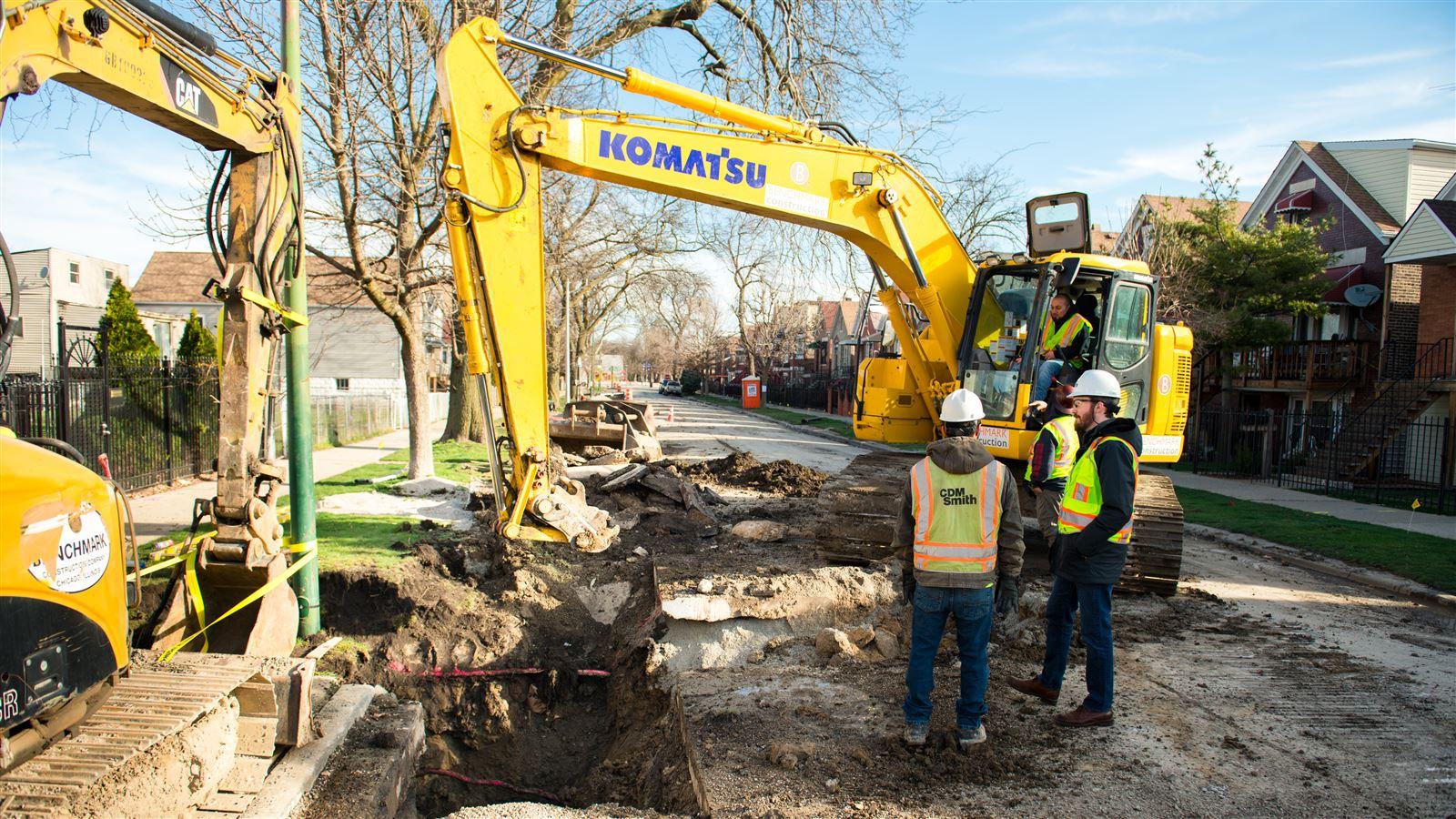Is Your Utility Ready for the LCRI? Lessons from Illinois's Early Experience
Illinois enacted the Lead Service Line Replacement and Notification Act (LSLRNA) in January 2022, positioning the state's utilities years ahead of federal regulations. Illinois utilities promptly implemented stricter requirements, including revised tier sampling that moved all copper with lead solder to Tier 4 and required confirmation of all materials (including interior plumbing with lead solder) for sample sites.
As Chicago's former Commissioner for the Department of Water Management, Andrea Cheng, PhD, PE, shares her lessons learned on navigating new sampling requirements like fifth-liter collection, overcoming low response rates in resident outreach, collecting essential data on premise plumbing and filters, and coordinating between inventory and sampling teams.
Andrea's early experience in Illinois offers valuable guidance for utilities nationwide preparing for LCRI compliance.

Understanding new sampling requirements
1. No more unknowns allowed
Systems with known lead or galvanized service lines must return to standard monitoring with larger sample pool sizes every six months. Most importantly, under LCRI unknown service line materials are no longer allowed in sampling pools for tiers 1-4.
2. Fifth liter sampling
In addition to the traditional first-draw sample, utilities need to collect a fifth-liter sample and use the higher lead level of the two results under LCRI. This creates new challenges for resident instruction and participation.
"Residents who used to just fill one bottle—pretty simple to explain—now have to fill five bottles, and it can be confusing that we’re not even analyzing the middle three," Andrea says, emphasizing the need for crystal clear sampling instructions.

The reality of resident outreach for new sample locations
1. Response rates are low
"We were seeing 10% response rates to cold calls and emails in some communities. We started to realize it's not common for people to pick up the phone these days, especially from an unknown number," she notes. Utilities need to plan for extensive outreach efforts with multiple contact methods.
2. Free sampling requests aren't overwhelming
"We're typically encouraging residents in the compliance pool to fill out their samples and we still don't get a huge response. So when you're talking about voluntary sampling programs, a lot of people request kits but don't follow through," Andrea explains. "They just don't want to stagnate the water for six hours because it's understandably not convenient. I encourage utilities to offer free voluntary sampling because they usually won't get an avalanche of free sampling requests but it helps with transparency and building positive relationships with the community."
3. Communication must be multi-modal
Utilities have just three business days to report results to residents, and for mailed letters, that means postmarked within three business days. Collecting email addresses and phone numbers, not just mailing addresses, will be essential. As volume increases, utilities will need efficient systems to track compliance with these tight timelines.

Essential data collection beyond service lines
1. Premise plumbing materials
Systems need to identify the plumbing materials inside homes, not just service line materials, for LCRI compliance sampling pools. This requires inspections or detailed surveys. As Andrea explains, Illinois no longer allows for assumptions: "Illinois shut down the guessing game. You can't assume the material is copper with lead solder just because of the home's age, you have to go physically inspect it now."
2. Filters and water treatment
Utilities need to know if residents have point-of-entry (POE) or point-of-use (POU) filters and water softeners because the EPA prefers sampling through untreated water for LCRI compliance sampling pools.
3. Building types
Single-family (SF) versus multifamily (MF) designation impacts compliance sampling tiers. "The intent with this is to determine if you're sharing a service line and if people can reliably stagnate the water in that service line for six hours," she says.

Practical implementation strategies
1. Leverage existing home visits
"If most utilities had known 10 years ago, they needed to get premise plumbing materials for compliance, they would have been conducting this while replacing water meters," Andrea adds. Make the most of home visits to record data you might be missing in a unified system.
2. Prepare for survey challenges
Phone surveys can work, but they require some skill. Andrea recalls, "At in-person visits, I'd ask someone, 'Do you have a water softener?' And they'd say, 'Oh no, no, no.' Then I'd take a closer look and see something that looks like a water softener... so I'd ask, 'Do you add salt to any equipment in your house on a regular basis?' And they'd go, 'Oh yes, yes, yes!'"
The key to phone surveys is gauging whether residents truly understand your questions. They can reduce stress on residents, but you need to assess if they're giving you accurate information.

Strategic considerations
1. Coordinate between departments
"Your inventory staff and sampling compliance staff might be in separate departments, but communication between them is essential," she notes. As inventory identification progresses, compliance sampling requirements may change.
2. Consider service line replacement timing
Utilities must carefully coordinate lead sampling with replacement programs. If you accidentally conduct sampling after a replacement, it won't count towards your sampling. Track replaced lines in real time to remove them from the sampling pool and add newly identified lead service lines as they're discovered.
3. Retain reliable participants
According to Andrea, "Many utilities rely on retired employees for compliance samples. They'll let you into their homes, they get why the samples matter, and you can count on them." If existing sampling participants meet new requirements, keeping them is valuable.
Learn from Illinois: start early, gather good data, and build systems that handle the complexity
The LCRI requirements are complex but manageable with smart planning and realistic expectations. "Compliance sampling programs can be expensive and cumbersome. If you don't have large numbers of lead and galvanized lines and can remove lead and galvanized lines sooner in your system, it's going to save you money in the long run," Andrea recommends.

Start compliance actions now. Don’t wait.







